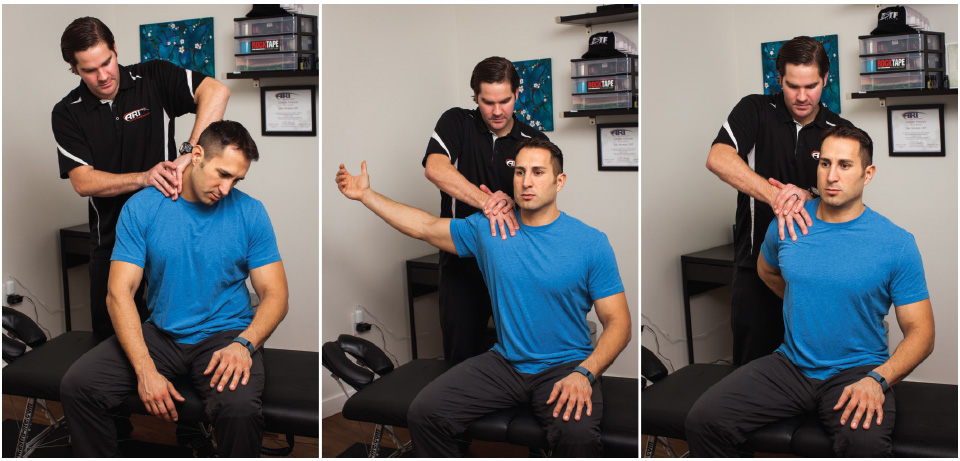Q&A on Active Release Technique

With 2015 in full stride and many of us knee-deep in our training programs, I am buzzing over the opportunity to share some therapeutic advice to help you prolong your fitness journeys. Training and injuries have become synonymous these days due to the growing populations rushing into the newest and most intriguing fitness outlets. While I am a big advocate of cross training and keeping things fresh on the exercise front, I am also a proponent of safe progression into these forms of training. With enticing exercise programs popping up everywhere, plus the drive to push one’s body beyond its current limits, we could be looking at a breeding ground for a serious-fitness related injury. This is not to say exercise-related injuries are unavoidable; this is just a word of caution before diving headfirst into the latest fitness craze without first laying the proper groundwork.
I am willing to bet at some point you or someone you know has suffered a muscular or other soft-tissue injury. Whether it’s muscle tightness in your neck from sleeping wrong or muscle aches from a rigorous training program, it’s safe to say that your body is telling you something and making that point emphatically. Let’s face it, injuries can be a part of the process of having an active lifestyle. The problem we often face is how to address these injuries. For some, these muscular pains may come and go, but for many these pains can linger and worsen before any improvement is felt. More severe cases can result in sleep disturbance and depression.
A modern form of therapy being used to treat these soft tissue injuries is called A.R.T. (Active Release Technique)—a form of therapy aimed to smooth out your muscle pains through a unique approach. A.R.T. has offered relief to a wide range of patients from world-class athletes to sedentary office workers. In search of a better understanding as to what this form of therapy entails and why it is so distinct, I reached out to Jake Norman, a local A.R.T. practitioner at Functional Sports Therapy and Fitness, to answer a few questions.
Q: How would you define ART?
A: A.R.T. is a state of the “art soft tissue method” that utilizes over 500 treatment techniques to repair ailing muscles, ligaments, tendons, nerves, and fascia. Because scar tissue (muscle adhesions) tends to form as a result of a muscular injury, chronic pain may develop. These are the types of injuries that seem to never go away and may worsen over time with repeated use in their injured state. At this point, some form of manual therapy can be administered to free up the ailing muscle tissue that is in constant tension and hindered by the formation of scar tissue. This is where the hands-on approach of A.R.T. steps in to provide relief and restoration for the injured area.
Q: Who would benefit from ART treatments?
A: I see a variety of patients; ranging from serious athletes that train at a high level to the less active populations, such as office workers, who have ailments due extended periods of sitting. More recently I have seen a rise in the new mom population seeking therapy after pregnancy. They tell you a lot about how to prepare for a baby, but not much about the potential aches that come postpartum. A.R.T. does not limit itself to any specific clientele; it is available for anyone who needs soft tissue treatment.
Q: How many treatments are recommended until the patient feels relief?
A: Every client is treated individually and according to the severity of their respective issue. I generally recommend 3–6 treatments for best results. However, it is not uncommon to feel immediate improvement after 1–2 sessions if you have less severe symptoms.
Q: What sets Active Release Technique apart from other forms of manual therapy that treat similar injuries?
A: A.R.T. sets itself apart from other treatment methods through its protocols specific to the muscle, tendon, ligament, and nerve. Furthermore, A.R.T. protocols require a high level of precision to perform. A practitioner should have a keen sense of anatomy and palpation skills to accurately locate the structure and find any potential adhesions on it. Lastly, the “active” component of A.R.T. is a unique yet effective aspect to the treatment. Each protocol involves a shortening of the structure being treated, followed by an active lengthening phase of the structure. This is what makes A.R.T. so effective in breaking up the adhesions and scar tissue that may be restricting the affected areas.
Finding the right treatment for a soft tissue injury can turn into a witch-hunt these days. With so many forms of manual therapy out there such as chiropractic, Airrosti, or the wide variety of deep tissue massage options, it can get difficult seeking the right help. While these choices for pain relief are effective in their own right, A.R.T. is now establishing itself as a dependable option for soft tissue ailments, strains, and overuse injuries. A.R.T. is holding its ground with relevance and effectiveness as manual therapy practices have evolved over the years. It has a modern touch with its dynamic hands-on approach that separates it from other conventional treatment methods.
If you have exhausted your options for pain relief, then this treatment may be your light at the end of tunnel.
For more information on A.R.T., visit activerelease.com
You can reach Jake at functionalsportstherapy.com






